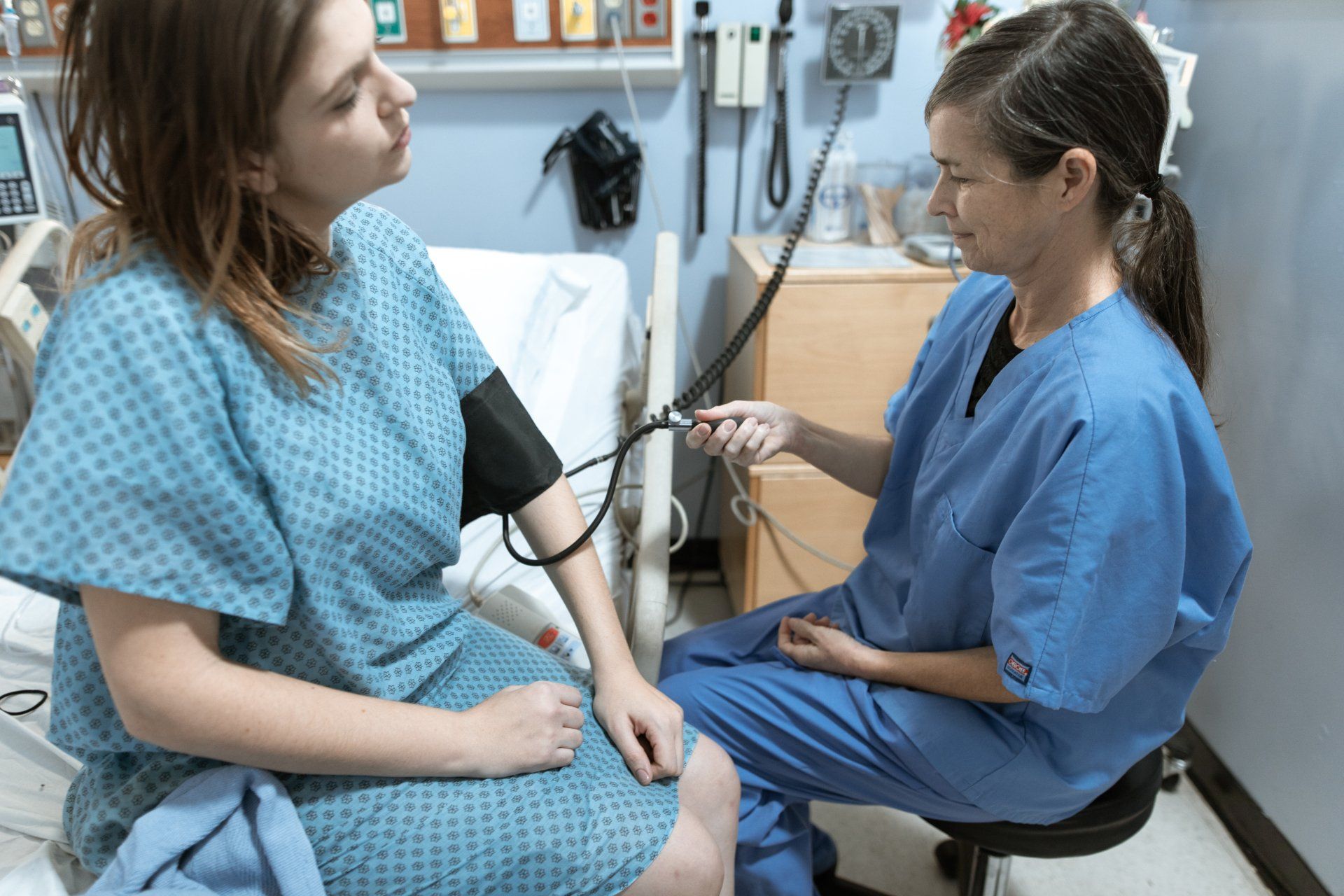A Guide to Ovarian Cancer

In ovarian cancer, there is an abnormal growth of cells in the ovaries. The ovary is an almond-shaped organ responsible for producing eggs and the female hormones estrogen and progesterone.
According to the American Cancer Society, ovarian cancer is the fifth leading cause of death in women in the United States, causing more deaths than cervical, vulvar, vaginal, and uterine cancers.
This article will discuss ovarian cancer types, causes, diagnosis, and treatment.
What are the types of ovarian cancer?
Ovarian cancer is classified based on the cell it originates from. Types of ovarian cancer include:
- Epithelial ovarian cancer is the most common and deadliest type of ovarian cancer. It starts on the outermost surface of the ovary.
- Germ cell ovarian cancer is a rare form of ovarian cancer that begins in the eggs.
- Stromal ovarian cancer is even rarer than germ-cell ovarian cancer. It develops from the cells that produce progesterone and estrogen.
What causes ovarian cancer?
The exact cause of ovarian cancer is unknown. However, there are some risk factors.
- Using fertility treatment: Women who conceive via in-vitro fertilization (IVF) are at risk of ovarian cancer.
- Age: Older women are at risk of developing ovarian cancer.
- Inherited genes: Having relatives from both sides of the family with ovarian cancer is a risk factor.
- Obesity: Women with a BMI of at least 30 have a high risk of developing ovarian cancer.
- Having children later in life: Women who have never gotten pregnant or have kids after age 35 are at risk of developing ovarian cancer.
- Endometriosis
- Starting menstruation early or starting menopause late
- Taking hormone therapy after menopause
What are the symptoms of ovarian cancer?
Ovarian cancer can grow in a woman's body for a while before symptoms appear. It is often called a silent killer because the symptoms may mimic symptoms of other conditions like constipation, indigestion, and premenstrual cramps.
Other symptoms of ovarian cancer include:
- Bloating
- Pain in the abdominal area
- Lump or swelling in the abdomen
- Frequent urination
- Changes in eating habits
- Bleeding from the vagina.
- Unexplained weight loss
- Fatigue
- Diarrhea
How do doctors diagnose ovarian cancer?
Because symptoms of ovarian cancer are typically confusing, it is difficult to diagnose early.
If your doctor thinks you have ovarian cancer, they will do a pelvic exam.
Other tests to diagnose ovarian cancer include transvaginal ultrasound and a CA-125 blood test.
How do doctors determine the stage of ovarian cancer?
Doctors determine the stage of ovarian cancer by a process called staging.
The cancer stage determines its seriousness and the best treatment options for it.
They typically use the TNM system from the American Joint Committee on Cancer to stage ovarian cancer. This system uses the factors below to determine the stage of cancer.
- T: The size of the tumor
- N: Are the lymph nodes involved?
- M: Metastasis (has it spread to other body parts?)
What are the stages of ovarian cancer?
Ovarian cancer ranges from stage 1 to stage 4, with stage 1 being the earliest stage and stage 4 being the latest.
Stage 1 Ovarian Cancer
In stage 1 ovarian cancer, the cancer is found on only one or both ovaries and fallopian tubes but hasn't spread to other sites.
There are three groups: 1A, 1B, 1C
Stage 1A: the cancer is in only one ovary or fallopian tube.
Stage 1B: cancer is in both ovaries and fallopian tubes.
Stage 1C has three groups:
- Stage 1C1 means the tissue surrounding the tumor bursts during surgery, which might spread cancer to the pelvis and abdomen.
- Stage 1C2 means the cancer is present in the outer surface of both ovaries and fallopian tubes.
- Stage 1C3 means the cancer is present in the fluid (ascites) taken from the abdomen during surgery.
Stage 2 Ovarian Cancer
In stage 2 ovarian cancer, cancer has extended to other organs in the pelvis.
There are two groups: 2A and 2B.
- Stage 2A means cancer has spread to the uterus.
- Stage 2B means the cancer is found in other organs in the pelvis but hasn't extended beyond the pelvis.
Stage 3 Ovarian Cancer
In stage 3 ovarian cancer, cancer has spread to other organs beyond the pelvis. For example, it might be present in the lymph nodes or abdomen.
There are three groups: 3A, 3B, 3C
3A has two groups: 3A1 and 3A2
- Stage 3A1 means the cancer is in the lymph nodes in the abdomen.
- Stage 3A2 means cancer in the peritoneum, the abdominal lining covering the abdominal organs.
Stage 3B means small cancerous growths (2cm or less) are on the abdominal lining.
Stage 3C means larger cancerous growths (more than 2cm) are on the abdominal lining.
Stage 4 Ovarian Cancer
In stage 4 ovarian cancer, cancer has extended to the lungs and liver.
There are two groups: 4A and 4B
- Stage 4A means the cancer is present in the lungs but hasn't affected other organs, such as the liver and spleen.
- Stage 4B means the cancer is present in the liver or spleen and other sites outside the peritoneum.
What are the treatments for ovarian cancer?
Your doctor will recommend treatments based on the stage of cancer. Treatment options include:
Can you prevent ovarian cancer?
There are no foolproof ways to prevent ovarian cancer. But the steps below can help reduce your risk.
- Giving birth
- Taking birth control pills for more than five years
- Breastfeeding
- Having your ovaries removed or a hysterectomy (an operation involving removal of the uterus or cervix)
Summary
Ovarian cancer can be challenging to diagnose early because its symptoms mimic symptoms of other health conditions.
Talk to your healthcare provider if you have any symptoms or risk factors of ovarian cancer and schedule a test.
Sources:
https://www.cancer.org/cancer/ovarian-cancer/about/key-statistics.htm
The untapped potential of ascites in ovarian cancer research and treatment
https://www.cancer.org/cancer/ovarian-cancer/detection-diagnosis-staging/staging.html
https://www.cancer.org/cancer/ovarian-cancer/about/key-statistics.html
https://www.ncbi.nlm.nih.gov/pmc/articles/PMC5653668/
https://www.cdc.gov/cancer/ovarian/basic_info/symptoms.htm
https://www.facs.org/quality-programs/cancer-programs/american-joint-committee-on-cancer/
https://www.cancer.org/cancer/ovarian-cancer/causes-risks-prevention/risk-factors.html
https://www.cdc.gov/cancer/ovarian/basic_info/prevention.htm
https://www.nhs.uk/conditions/ovarian-cancer/symptoms/
Thank you for reading Patient Education Essentials, the Write Shift RN blog.
Disclaimer: This article was written as a guest post for Write Shift RN LLC's blog. The information in it may not be wholly fact-checked or edited, allowing the reader to see the writer's work and skills firsthand. This information is not intended as medical advice. It is for informational and educational purposes only. Always talk to your doctor or other qualified healthcare providers about any questions or concerns you may have regarding medical conditions.











